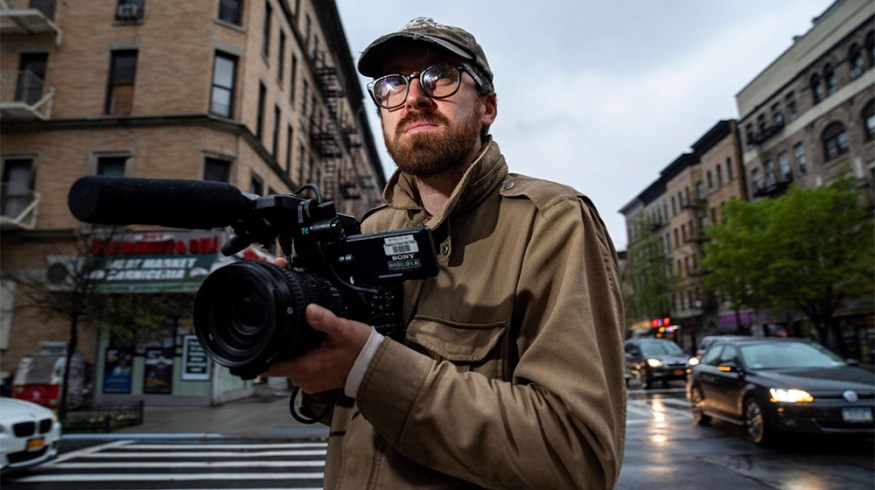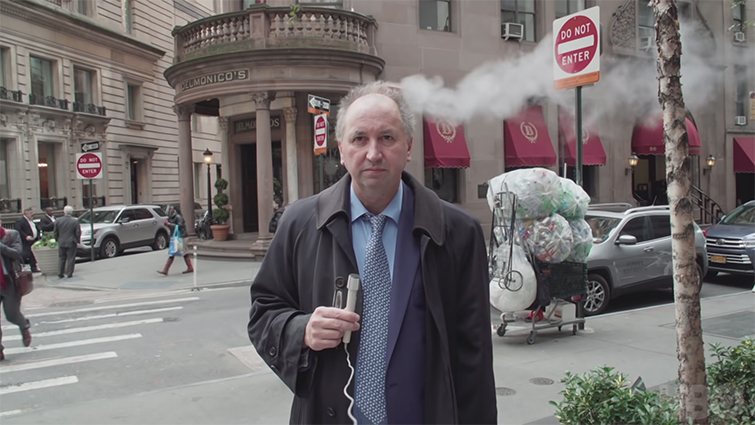
Finding Comedy in the Real World with “How to with John Wilson”
Discover how the popular new HBO docuseries explores the worlds of both comedy and documentary at the same time.
In case anyone has yet to discover it, there’s a great documentary on HBO called How to with John Wilson. It’s produced by Nathan Fielder (known for his sardonic Comedy Central show Nathan For You), and it’s an absolutely fascinating look into the world of run-and-gun documentary storytelling. As a case study, it shows just how much of a documentary’s production one man with one camera can do. On top of that, it’s also a great example of how even with a DIY one-man-band production, the documentary genre can bring comedy out of the unlikeliest places.
So, using How to with John Wilson as our focal point, let’s look into how this documentarian turned his Vimeo channel into perhaps one of the greatest hybrid documentary and comedy programs of all time.
Shoot What You See
The crux of How to with John Wilson comes down to one crucial element about John Wilson the filmmaker—he shoots everything. Similar to the protagonist in another famous meta-documentary Exit Through the Gift Shop, but without a disconnect from reality of his importance, Wilson has built a style and brand based on his “always be shooting” style. How to with John Wilson is really a look at one man’s life as he roams around New York, exploring both the city as well as himself in the process.
As you can see just from the trailer, Wilson really does shoot everything he sees. And, for those who are starting off in film and documentary, this is absolutely 100% the best mindset you can take as you’re looking to learn your craft. You can literally watch Wilson’s mind work in real time as he moves his camera around, zooming in on different elements, changing the framing to create humorous compositions, and generally keeping his head on a swivel, always ready to shoot any oddity that he encounters.
You don’t get many shots of the camera or gear that Wilson uses in the show. However, there are enough glimpses to help us identify that he’s working with a Sony Cinema Camera, which is lightweight enough to use as a handheld, as well as flexible enough to shoot in a wide variety of settings—from bright sunlit streets to dark subways platforms at night.
Adding Context and VO
Luckily for Wilson and his production, the format of his show doesn’t require much audio recording, at least while in the field. Instead, Wilson conveys much of the narrative of the show through the use of voiceover. We don’t get any in front of the camera introduction or exposition from Wilson, but we do get plenty of background information about him as he puts himself into his narratives early and often.
Not to say that Wilson doesn’t record audio while in the field. From the looks of it, he does have at least some sort of shotgun microphone with a strong windscreen and a few of the glimpses of his run-and-gun setup. The audio will come into the story whenever it’s needed, but as you can guess for a show predominantly shot on crowded New York City streets, it’s often to hammer home the loud and chaotic noises that one might hear from the craziest of situations.
Let People Tell Their Stories

That being said, there are plenty of interviews in the show, as well as solid audio from the various characters Wilson encounters. This leads me to believe that for the more “set up” situations, Wilson (or a small crew) has at least placed lapel mics or other additional audio methods for certain scenes. But, with modern audio technology, it’s very likely that Wilson can get by just fine with his camera, an attachable mic, and his own creative solutions to weave in organic sound with his voiceover narration.
However, the goal of the show—as well as any good documentary production—isn’t to set the scene for perfect lighting, audio, and performances. Instead, it’s to be there to let situations develop on their own. And, Wilson does a great job with his interviews, as well. As someone who’s shot many interviews while simultaneously being behind the camera and conducting the interview itself, it can be a tricky endeavor.
You can see in many examples that some subjects are a bit disarmed, at first, to be talking more to a camera than a person. Wilson wisely uses this to an advantage and, with his soft spoken demeanor, can quickly coax a subject to open up about themselves, as well as their uncomfortableness at his recording.
Document and Record Everything
In an interview with Indiewire, Wilson opens up a bit more about his obsession with documenting and recording everything.
That’s what I feel like video and film can do best is create an archive, a document of a very specific time and place. And, I’m always worried about losing things. I like to include as much of it and preserve as much of it as I can.
-John Wilson
We see examples of this in the show. In addition, Wilson shows copious amounts of old tapes from his earlier camera recordings, as well as detailed journals documenting his daily schedules and activities over the years.
To some, it might seem a bit extreme, and it certainly might be the only approach for a certain personality type. However, if we look closer at this “always recording” approach, we can learn a great deal about how documentarians develop their craft and worldview. It’s amazing that, even while making himself the subject of the show, Wilson can so objectively look at himself and the various subjects that he encounters. And, if you watch a few episodes of the show you’ll see, Wilson encounters some very crazy subjects and situations. However, with his seasoned approach, he stays objective and in the moment.
Find the Comedy, Don’t Create It
Finally, at the end of the day, How to with John Wilson is a comedy. As you can see in one of his earlier videos documenting a trip to the Sundance Film Festival with Vimeo, his unique ability to blend documentary and comedy has always offered a funny and fascinating look into the world around him.
However, even with big comedic names like Nathan Fielder and HBO attached, Wilson’s approach has clearly remained the same as he finds the comedy rather than creates it. Sure, there are some very odd and comedically-primed subjects that Wilson explores. However, the jokes are never on them, as Wilson allows his camera to simply find the funniest and best out of any situation.
If you’re interested in documentary and have an eye for comedy yourself, it’s a perfect program to study simply for how Wilson uses his camera. His focus on comedic compositions and framing, his open-hearted interviews and narration, and the overall style of the show indeed teaches viewers “how to” with John Wilson in regards to his documentary filmmaking craft.
Cover image via HBO.
For more documentary filmmaking advice and resources, check out these articles below.






